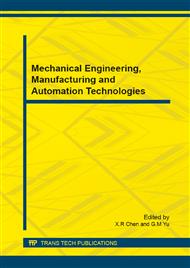p.50
p.56
p.60
p.64
p.71
p.76
p.80
p.84
p.89
Development of Dynamic Load Strength Test Machine Based on Automotive BIW
Abstract:
The dynamic load strength test of automotive BIW is an important parameter for vehicle passive safety, but different test standards, different test requirements, which caused much trouble to the test authority. To solve the shortcomings of the traditional machines, such as low automation, poor universality and weak ability of data processing, this paper designs a new test machine for the dynamic load strength trials of automotive BIW on the basis of three typical standards. The test results indicated that this test machine embodies the characteristic of easy operation, stable function, and wide suitability, which improves the measurement accuracy and efficiency, at the same time, solves the problem of the database construction.
Info:
Periodical:
Pages:
71-75
Citation:
Online since:
December 2014
Authors:
Keywords:
Price:
Сopyright:
© 2015 Trans Tech Publications Ltd. All Rights Reserved
Share:
Citation:


